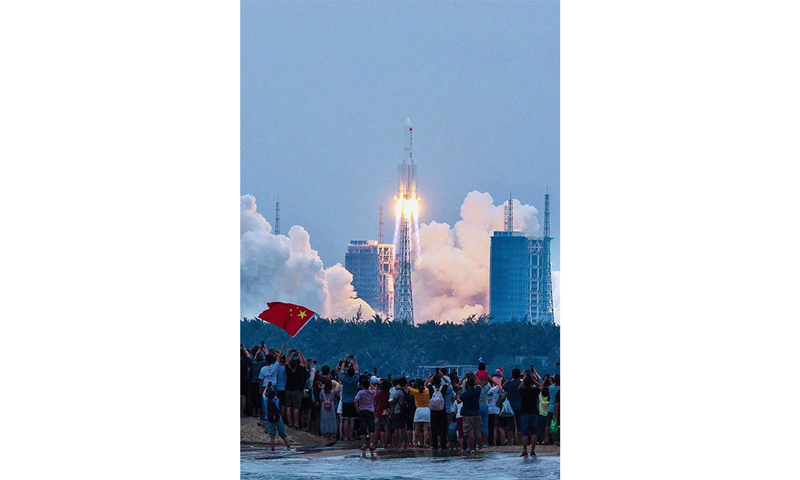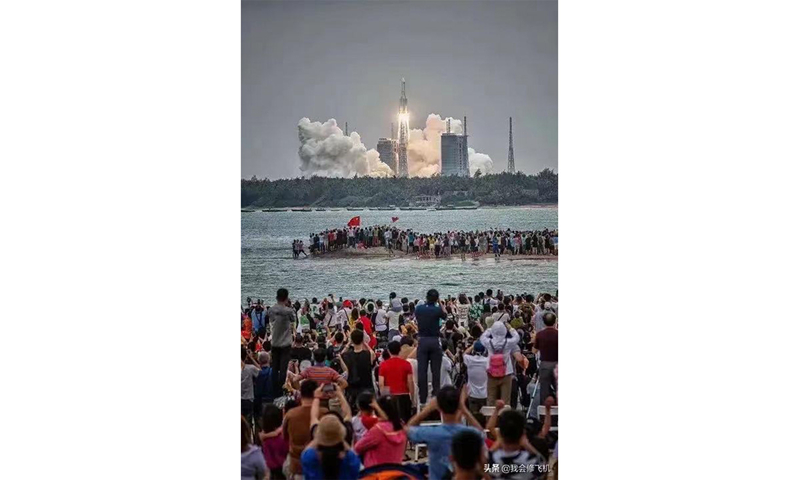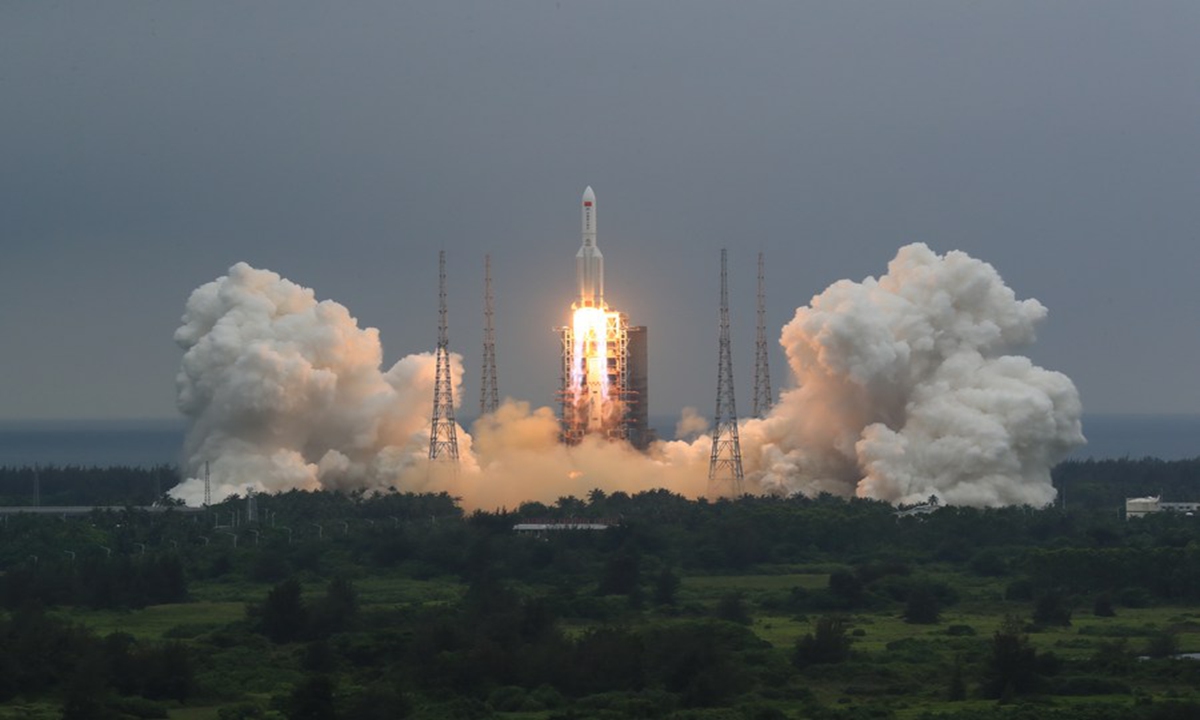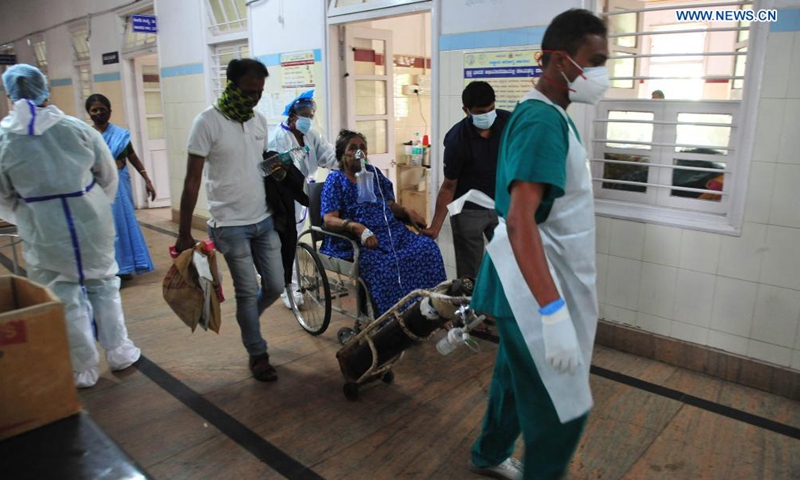>

People gather near the Wenchang Spacecraft Launch Site in South China's Hainan Province to watch the launching of Tianhe space station core module. (Photo:web)
China's successful space mission which involved sending into space the core module of its Tianhe space station lit up Chinese social media on Thursday, with netizens cheering the launch, expressing their patriotism and best wishes to the development of China's deep space exploration.
The Long March-5B Y2 rocket, carrying the Tianhe module, blasted off from the Wenchang Spacecraft Launch Site in South China's Hainan Province around 11 am on Thursday. Video clips of the launch soon went viral on Chinese social media and received more than 2 million views within one hour on China's Twitter-like Weibo, the Global Times found.
Weibo was flooded with excitement and national pride. "I burst into tears watching the launch video - We Chinese will have a 'home' in space!" one user wrote. "I hope my motherland can rise and skyrocket like Tianhe," he added.
More users forwarded videos with the popular sentence "Our (conquest) journey is the sea of stars!" to express their love and ambitious expectations for China's space industry.
"In the past we missed the Age of Discovery, which was the beginning of evil colonization," a user said. "Now, we begin our own peaceful 'age of space discovery.'"

People gather near the Wenchang Spacecraft Launch Site in South China's Hainan Province to watch the launching of Tianhe space station core module. (Photo:web)
Before Tianhe's launch, audio of a collection of pulsar signals recently captured by the 500-meter aperture spherical radio telescope (FAST)—also known as China's Tianyan or "Sky Eye"—was seen spread widely on social media earlier on Thursday by exhilarated Chinese netizens.
Weibo users paid tribute to the deceased former chief engineer of FAST Nan Rendong, and said the pulsar signals were "rhythmic" and sounded like a music tempo or Morse codes.
"The pulsars must be very talented DJs," a user wrote. "I almost danced with the beats."
Another user mentioned the signals that FAST seized at Hercules sounded much faster than pulsars. "Hercules seems very excited," she joked. "The signals there are like the sound of firecrackers — is Hercules celebrating Chinese New Year?"
Impressed by faraway sounds and the wonder of the universe that Chinese technology has shown to them, many netizens shared with great interest their expectations on China's further deep space exploration in the near future.
"China is building a 'villa' in space; I hope that one day we ordinary people can also travel into space and live in the Chinese-made 'villas,'" a Weibo user wrote. "I'm looking forward to that day."
It is possible that China's space station will be the only working station after 2024, when the International Space Station (ISS) is expected to retire, Chinese experts earlier predicted. "Considering the lack of funds of the ISS members, now it's a good time for China to catch up with and surpass them," said another Weibo user.
The launching of Tianhe and the pulsar signals captured by FAST gave Chinese people a strong impetus, on Thursday said user with the ID "youjinshaojiang."
"In today's world filled with epidemics, disasters and hostility, those who insist on looking up at the stars and exploring the universe are definitely the light of hope and civilization to mankind," she wrote on Weibo.
China successfully launches core module for its space station ...
China's Space Station expected to be operational by around ...
China on Thursday successfully sent into space Tianhe core module of space station. This marks China's space construction entering the full implementation stage. It's a crucial step forward for China's manned space program. Hundreds of millions of Chinese people felt inspired by the success.
















